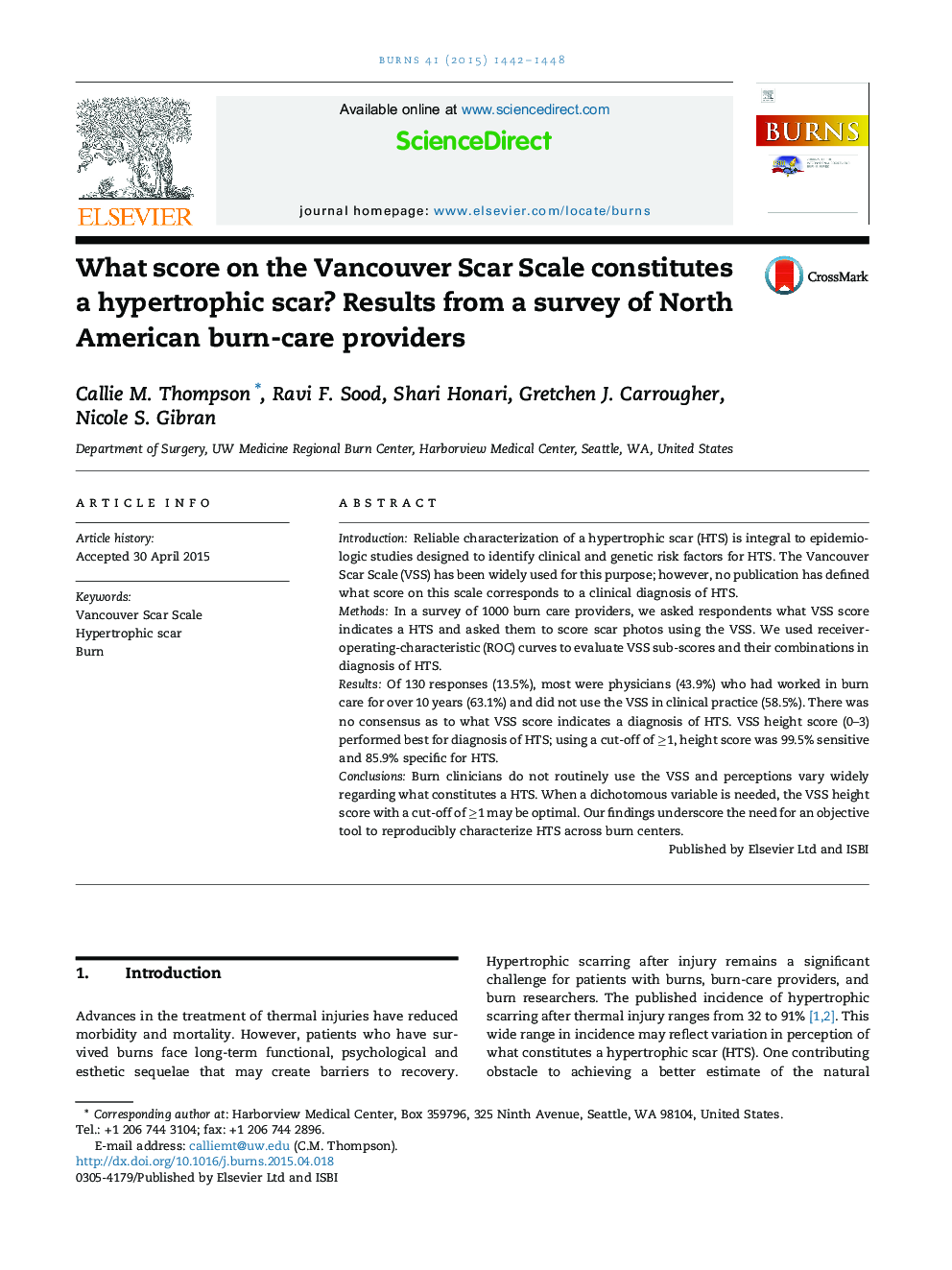| Article ID | Journal | Published Year | Pages | File Type |
|---|---|---|---|---|
| 3104250 | Burns | 2015 | 7 Pages |
•We sought to determine what Vancouver Scar Scale score indicates a hypertrophic scar.•A survey of burn care providers showed lack of consensus.•Height score ≥1 was highly sensitive and specific for diagnosis of hypertrophic scar.•Better objective tools are needed for epidemiologic studies of hypertrophic scar.
IntroductionReliable characterization of a hypertrophic scar (HTS) is integral to epidemiologic studies designed to identify clinical and genetic risk factors for HTS. The Vancouver Scar Scale (VSS) has been widely used for this purpose; however, no publication has defined what score on this scale corresponds to a clinical diagnosis of HTS.MethodsIn a survey of 1000 burn care providers, we asked respondents what VSS score indicates a HTS and asked them to score scar photos using the VSS. We used receiver-operating-characteristic (ROC) curves to evaluate VSS sub-scores and their combinations in diagnosis of HTS.ResultsOf 130 responses (13.5%), most were physicians (43.9%) who had worked in burn care for over 10 years (63.1%) and did not use the VSS in clinical practice (58.5%). There was no consensus as to what VSS score indicates a diagnosis of HTS. VSS height score (0–3) performed best for diagnosis of HTS; using a cut-off of ≥1, height score was 99.5% sensitive and 85.9% specific for HTS.ConclusionsBurn clinicians do not routinely use the VSS and perceptions vary widely regarding what constitutes a HTS. When a dichotomous variable is needed, the VSS height score with a cut-off of ≥1 may be optimal. Our findings underscore the need for an objective tool to reproducibly characterize HTS across burn centers.
